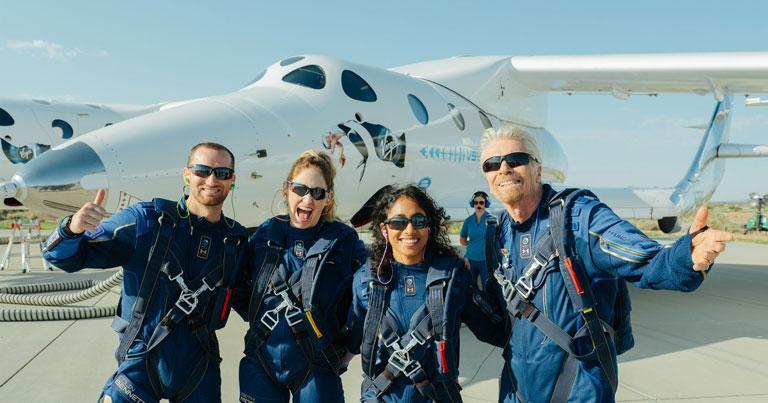
Virgin Galactic has successfully completed its first fully crewed spaceflight onboard VSS Unity. The flight, which took place on 11 July, was the twenty-second test flight of VSS Unity and the first test flight with a full crew in the cabin, including the company’s founder, Sir Richard Branson. The crew fulfilled a number of test objectives related to the cabin and customer experience, including evaluating the commercial customer cabin, the views of Earth from space, the conditions for conducting research and the effectiveness of the five-day pre-flight training programme at Spaceport America.
VSS Unity achieved a speed of Mach 3 after being released from the mothership, VMS Eve, and reached space at an altitude of 53.5 miles, before landing at Spaceport America.
Michael Colglazier, Chief Executive Officer of Virgin Galactic, said: “Today is a landmark achievement for the company and a historic moment for the new commercial space industry. With each successful mission we are paving the way for the next generation of astronauts. I want to thank our talented team, including our pilots and crew, whose dedication and commitment made today possible. They are helping open the door for greater access to space – so it can be for the many and not just for the few.”
Sir Richard Branson said: “I have dreamt about this moment since I was a child, but nothing could have prepared me for the view of Earth from space. We are at the vanguard of a new space age. As Virgin’s founder, I was honoured to test the incredible customer experience as part of this remarkable crew of mission specialists and now astronauts. I can’t wait to share this experience with aspiring astronauts around the world.”
Branson continued, “Our mission is to make space more accessible to all. In that spirit, and with today’s successful flight of VSS Unity, I’m thrilled to announce a partnership with Omaze and Space for Humanity to inspire the next generation of dreamers. For so long, we have looked back in wonder at the space pioneers of yesterday. Now, I want the astronauts of tomorrow to look forward and make their own dreams come true.”






